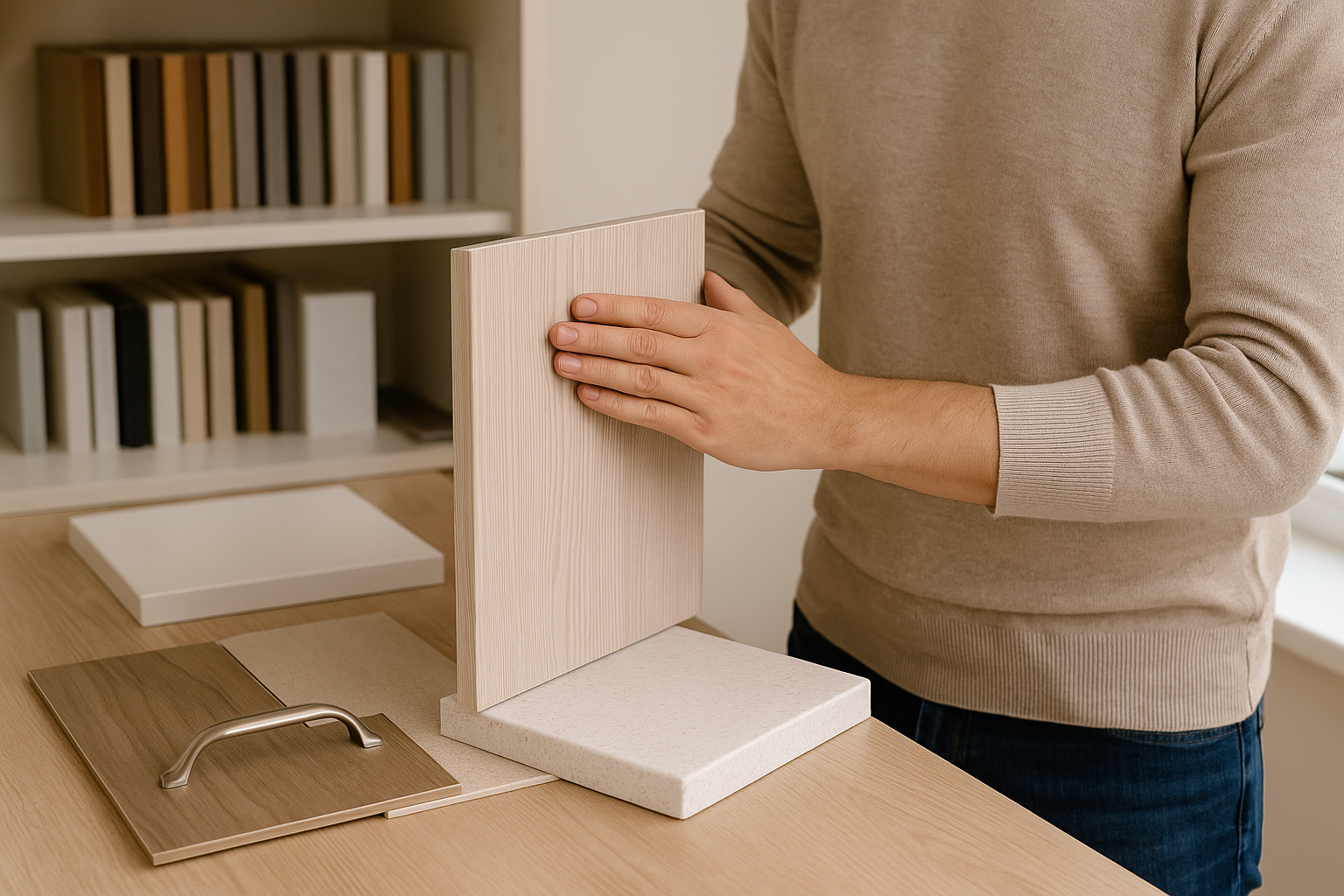How to Spot Materials That Won’t Last a Single Lease
Discover the tell‑tale signs of low‑quality building materials mislabeled as durable. Learn what to check before specifying for rentals.

Choosing the right materials for rental renovations isn't just about appearances, it’s about durability, longevity, and avoiding costly replacements. Many finishes look great in the showroom, but fall apart months after move-in. Here are three key red flags to watch for when specifying materials for rental units:
1. Looks Thick, Feels Hollow
The first sign of trouble lies in weight and feel. If a cabinet door or countertop looks solid but sounds hollow when tapped or feels lightweight, it’s likely built on cheap MDF or particleboard with a flimsy laminate layer.
- Test it: Lift cabinet doors, compare weights side by side, or tap the surface. Hollow MDF resonates; plywood or solid wood offers a satisfying, muted thud.
- Why it matters: Hollow materials crack, delaminate, or dent easily, especially under heavy use. In rentals, that leads to frequent repairs, tenant complaints, and early replacements.
- What holds up: Opt for plywood or solid-core materials, which provide structural integrity and resist wear, even after years of use.
2. Fake “Scratch Resistance” Claims
Lots of materials boast scratch resistance on labels, but marketing can be misleading. Many scratch-resistant surfaces show visible wear within weeks of regular use.
- DIY test: Bring a sample and lightly drag keys, coins, or kitchen tools across the surface. Any scuff or mark means it won’t withstand real-world use.
- Why it matters: Every scratch opens the door to further damage, moisture penetration, and more frequent refinishing or replacement.
- What works: True scratch-resistant surfaces, like genuine quartz or high‑pressure laminate, maintain their finish after tough tests, and tenants will thank you for it.
3. Cheap “Chrome-Look” Hardware
Shiny handles and faucets can be deceiving. Underneath the glossy finish, cheap hardware often hides thin electroplated layers over low-grade metal that peels, rusts, or loosens fast.
- Inspect closely: Twist handles, look for color inconsistencies, check edges for chipping or flaking.
- Why it matters: Hardware failure is one of the top service complaints—install cheap pieces, and you’ll be fixing or replacing them lease after lease.
- What lasts: Solid metal, brass, or stainless finishes with verified plating and durable cores withstand moisture and frequent use, just what rentals demand.
4. Perform Spot Testing for Durable Selections
Before you sign off on finishes, test them in person:
- Lift and knock: Listen for hollow tones, check for light weight.
- Scratch swipe test: Lightly scrape with metals to see if marks show.
- Twist and tug: Handles should stay firm, resist bending, and have consistent finish.
Build this into a material review process. Ask for samples—or bring your own toolkit—before placing large orders. This pre-screening avoids costly mistakes later.
5. The Hidden Cost of Cheap Materials
Skimping on quality sounds budget-friendly, but the real cost shows up in:
- Frequent maintenance calls
- Tenant dissatisfaction and turnover
- Partial or full replacements between leases
- Lost revenue from unit downtime
Over time, cheap materials cost far more than investing in mid-grade options upfront.
6. Durable Alternatives That Deliver
Here’s how to upgrade wisely, without overpaying:
- Cabinetry: Choose plywood or solid-core doors over MDF. These resist moisture, maintain structure, and age gracefully.
- Countertops: Quartz resists scratches, doesn’t stain, and lasts ten years or more with normal use.
- Hardware: Pick commercial-grade pieces with solid cores and real finishes. These last through hundreds of uses.
This balance of quality and price builds ROI, keeps units looking great, and minimizes maintenance headaches.
7. Recap & Takeaways
- Tap twice: Hollow sound = low quality
- Scratch test: Marks = not rental-ready
- Handle inspection: Loose or peeling = avoid
- Spot test everything before buying
- Invest a little more upfront to save thousands later
👉 Ready to spec materials that stand up to rental life? Talk to us about smarter design decisions.
📌 SEO‑Relevant FAQs
Q1: How can I tell if a cabinet is hollow or solid?
Tap the surface. A hollow sound indicates MDF or particleboard. Solid plywood or wood feels heavier and produces a muted thud.
Q2: Does scratch-resistant really mean scratch-proof?
Not always. Scratch-resistant often holds up to light use, but may fail under real-life wear. Always test before approval.
Q3: Why is chrome-look hardware such a bad idea?
Thin plating often peels or corrodes. The base metal can be weak, causing wobbly handles or permanent wear within a few months.
Q4: Are plywood cabinets that much more expensive?
Plywood costs a bit more, but it lasts much longer. For rentals, it’s often cheaper over time thanks to fewer repairs.
Q5: Does material testing slow down a renovation?
Not when integrated into the planning phase. Review samples before ordering materials, then install quickly and confidently once turnover occurs.
Let us create a space that exceeds your expectations

